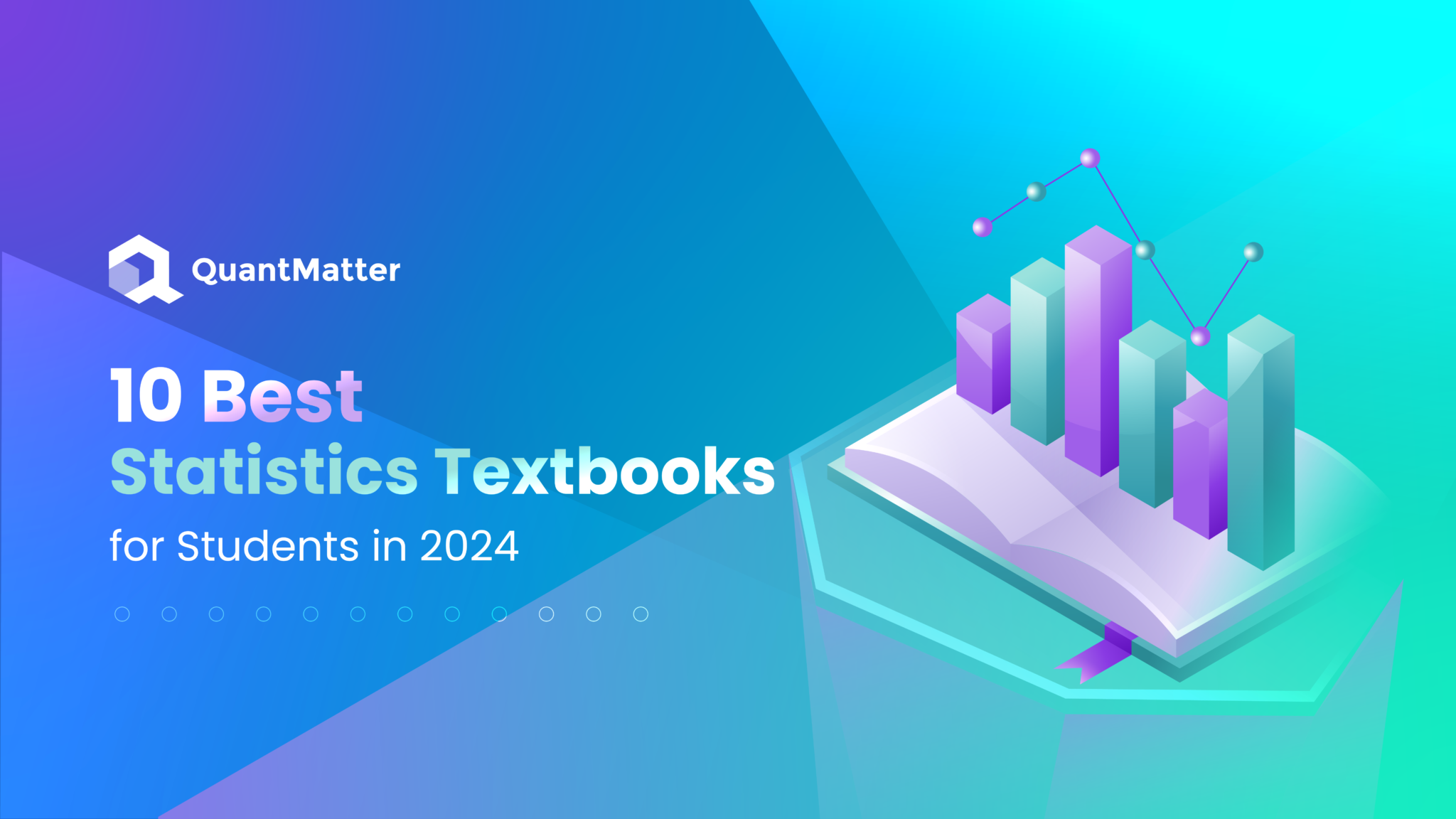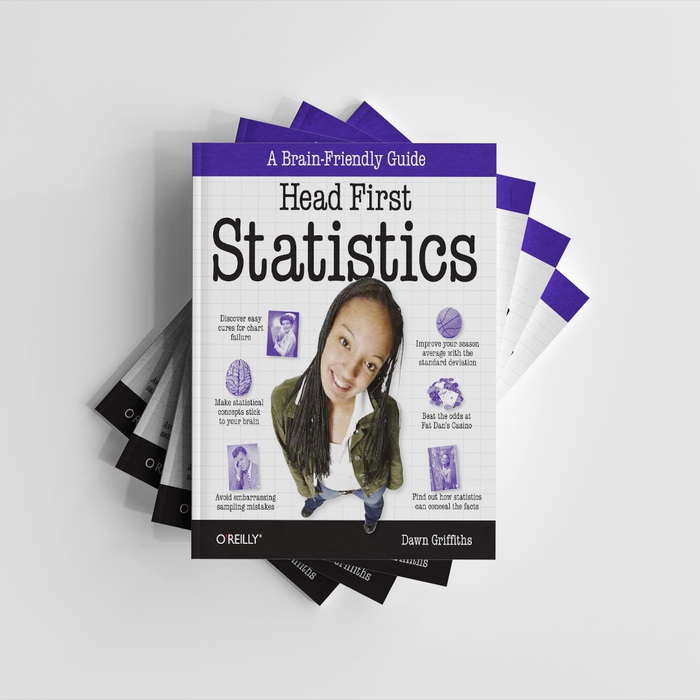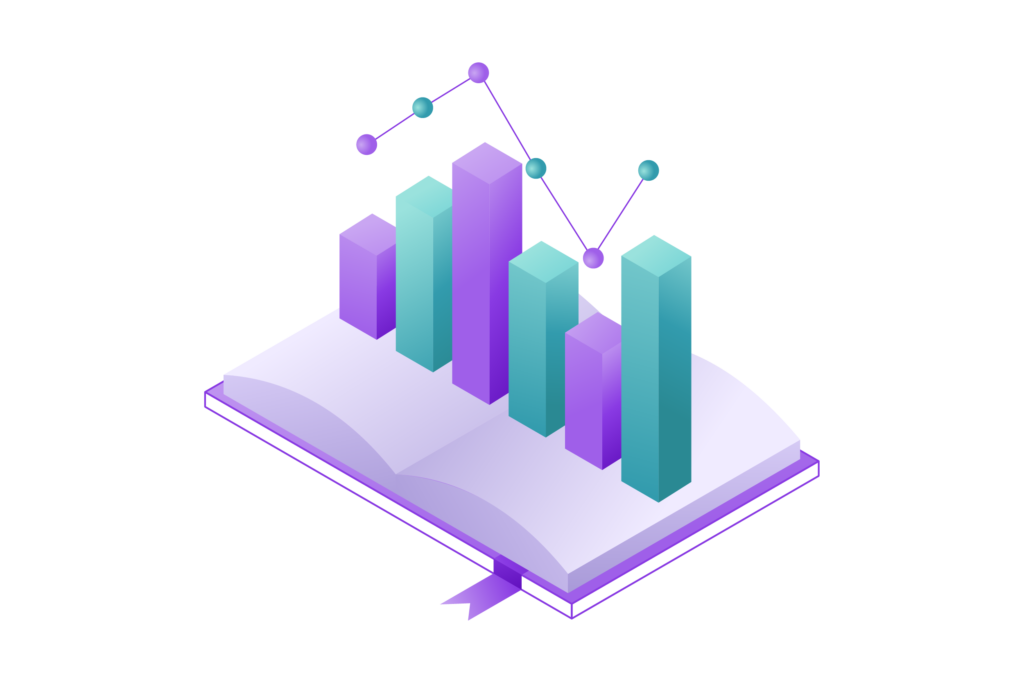
In this guide, we’ve compiled a list of the 10 best statistics textbooks for students in 2025. These books have been selected for their clarity, comprehensiveness, and relevance to modern-day statistical challenges, helping students build a strong foundation in the subject.
Statistics is a crucial subject for students across various fields, from business and economics to engineering and social sciences. With its growing importance in data analysis and decision-making, having the right resources to learn statistics effectively is essential. However, finding the perfect textbook can be overwhelming due to the vast number of available options.
Whether you’re new to statistics or looking to enhance your understanding, choosing the right textbook can make a significant difference in your learning experience. From books that focus on introductory concepts to those that dive into more advanced statistical theories, there’s a resource for every student’s needs.
10 Best Statistics Textbooks for Students in 2025

Finding the right textbook can be challenging for students diving into statistics. The quality of the book plays a huge role in understanding complex statistical concepts. To help students choose the best resources, we’ve compiled a list of the 10 best statistics textbooks for 2025. These textbooks cover a wide range of statistical methods, from introductory concepts to advanced topics.
Each book on this list is carefully chosen based on its clarity, ease of use, and how well it covers core statistical principles. Whether you’re just starting out or looking for advanced material, these textbooks are excellent companions for your studies. Below are the top 10 recommendations:
1. Elementary Statistics by Mario F. Triola
Elementary Statistics by Mario F. Triola is a textbook that combines accessible explanations with real-world applications, making it a top choice for students beginning their statistics journey. The book covers a broad range of topics, including descriptive statistics, probability, hypothesis testing, correlation, and regression. The author’s 30+ years of teaching experience help create a smooth learning experience, with well-structured chapters and a user-friendly design.
The textbook is packed with real-life examples, from analyzing opinion polls to understanding how statistics power advancements like self-driving cars. This text also offers supplementary resources like videos, interactive activities, and practice problems, making it suitable for both classroom and self-study environments. The accompanying software, MyStatLab, further enhances the learning process by providing additional practice and tutorials.
2. Stats: Data and Models by Richard De Veaux, Paul Velleman, David Bock

Stats: Data and Models is an approachable statistics textbook that presents key concepts through a conversational tone, making it feel less like a math class and more like a discussion. The authors emphasize intuition over computation, helping students develop an understanding of statistics through practical examples and engaging visuals. Their use of “Think/Show/Tell” examples breaks down complex concepts into understandable steps, ensuring that students grasp the “why” behind the numbers.
Whether discussing probability, linear regression, or inferential statistics, the book stays light on formulas and heavy on clear, insightful explanations. Ideal for students who may struggle with mathematical jargon, this book helps them see statistics as an integral part of understanding the world. The exercises range from basic to challenging, and solutions are presented in a way that reinforces learning.
Also read: 7 Best Quantitative Analysis News to Check this 2025
3. An Introduction to Statistical Learning: with Applications in R by Gareth James, Daniela Witten, Trevor Hastie, Robert Tibshirani

This highly recommended textbook is particularly suitable for students interested in learning statistical concepts through the lens of machine learning and data science. The authors take a computational approach, combining foundational statistical theory with applications in R. The book covers supervised learning, resampling methods, classification, clustering, and more.
One of its major strengths is the inclusion of real-world datasets from fields like biology, finance, and astrophysics, showing how statistics can solve actual problems in various industries. This is an excellent book for students aiming for careers in data science, as it balances the theoretical aspects of statistics with the practical tools used by statisticians today. With colorful graphics, clear explanations, and a focus on making the material accessible, An Introduction to Statistical Learning is a go-to resource for anyone learning about statistics and machine learning.
4. Naked Statistics: Stripping the Dread from the Data by Charles Wheelan

This book is a refreshing take on statistical concepts, focusing on the practical aspects of statistics without overwhelming readers with dense mathematics. Charles Wheelan uses engaging anecdotes and real-world examples to explain statistical concepts in a way that feels approachable, even fun. From understanding probabilities in everyday life to interpreting statistical errors in studies, this book aims to make statistics less intimidating.
Also read: 12 Best Essential Resources for Learning Financial Econometrics
It’s perfect for students who want to appreciate the role statistics play in decision-making without diving into mathematical formulas. The casual tone and relatable examples make this book stand out for those who want to understand statistics from a conceptual standpoint, rather than getting bogged down by equations. This book offers an easy-to-read entry point into the world of statistics for students across various disciplines, making it a favorite among non-math majors.
5. Head First Statistics: A Brain-Friendly Guide by Dawn Griffiths

Head First Statistics takes a radically different approach to teaching statistics by using engaging visuals, puzzles, stories, and hands-on exercises to explain statistical concepts. The book is designed with the premise that learning is most effective when it’s fun and interactive. Dawn Griffiths, with her first-class degree in mathematics, transforms what could be a dry subject into an exciting learning experience.
Whether it’s covering probability distributions, hypothesis testing, or data visualization, this book approaches each topic from multiple angles to ensure understanding. If you’re the type of student who learns best by doing and interacting with the material, this guide provides plenty of exercises and challenges to reinforce key ideas. The “brain-friendly” approach includes diagrams, games, and real-life examples that make abstract concepts easier to grasp.
6. Statistics by Robert S. Witte and John S. Witte

Widely regarded as one of the best introductory statistics textbooks, this book is an excellent resource for undergraduate students. The authors emphasize a clear, organized structure that gradually builds upon each statistical concept, making the material more digestible for beginners. Topics like variability, hypothesis testing, effect size estimation, and regression analysis are covered in depth.
This book’s strength lies in its clarity and the logical flow of topics, which help students build a solid foundation in statistical thinking. Practical examples from various disciplines allow students to see how statistics is applied in different contexts, from psychology to business. Exercises at the end of each chapter reinforce the material, helping students test their knowledge. This book also includes several real-world applications, giving readers the opportunity to connect theory with practice.
7. OpenIntro Statistics by David Diez, Mine Çetinkaya-Rundel, Christopher Barr

This textbook offers a fantastic introduction to statistics while being open-source, meaning it’s freely available to students and educators. The authors of OpenIntro Statistics are dedicated to providing accessible and high-quality statistical education to all students, regardless of background or financial means. The book uses engaging real-world examples, case studies, and a broad range of exercises to help students develop a solid understanding of statistical concepts.
Chapters cover core topics like probability, regression, and inference while presenting the material in a way that’s easy to follow. The book is frequently updated and includes a variety of online resources, such as interactive labs and additional exercises. This makes it a great choice for both classroom use and independent study. It’s also perfect for educators looking for a high-quality resource that doesn’t come with a hefty price tag.
8. Statistics in Plain English by Timothy C. Urdan

As the title suggests, Statistics in Plain English is designed to simplify complex statistical concepts for students who may not have a strong math background. The book avoids heavy mathematical details, focusing instead on providing clear explanations of fundamental ideas like central tendency, variability, correlation, and hypothesis testing. The book’s approachable language makes it a great resource for psychology, education, or social science students who need to understand statistics for their coursework.
Timothy Urdan provides numerous examples and analogies to explain each concept in everyday terms, making this book an excellent choice for students who are more interested in understanding statistics than performing complex calculations. Each chapter includes practice exercises and real-world examples, making it easy to see how the statistical principles discussed apply in practice.
9. The Complete Idiot’s Guide to Statistics by Robert A. Donnelly Jr., Ph.D.

This beginner-friendly guide is perfect for students who need to get through a statistics course without being overwhelmed by technical jargon. Dr. Robert A. Donnelly breaks down complex topics like distributions, probability, mean, median, mode, and standard deviation into simple, easy-to-follow explanations. This book covers everything you need to know for a basic understanding of statistics, with clear examples that relate to everyday life.
Its conversational tone and logical structure make it ideal for students new to the subject. The book also provides a variety of practice problems that help reinforce each topic as it’s introduced. Whether you’re preparing for an exam or just trying to fulfill a course requirement, this guide offers a straightforward and approachable path to mastering statistical concepts.
10. Statistics Done Wrong: The Woefully Complete Guide by Alex Reinhart

Alex Reinhart’s Statistics Done Wrong isn’t your traditional textbook, but it is an essential read for students looking to sharpen their statistical literacy. The book tackles the common mistakes people make when analyzing data, from misinterpreting p-values to overfitting models, and explains how to avoid them. The humorous tone makes the book an enjoyable read, even while it delivers serious insights into how statistics should—and shouldn’t—be used.
Reinhart’s goal is to help readers become more critical consumers of statistical information, empowering them to spot errors in everyday data interpretation. This is a fantastic complement to traditional textbooks, as it helps students avoid statistical pitfalls and better understand how to correctly apply the concepts they’re learning. It’s an especially important read for anyone considering a career in research or data science.
By diving deeper into the content and structure of these books, students can better decide which one suits their learning style and needs. Each textbook offers a unique approach to learning statistics, ensuring that students can find the right balance of theory, application, and engagement for their studies.
How to Choose the Best Statistics Textbook for You

Choosing the right statistics textbook depends on your learning style, level of understanding, and future goals. Here are some tips to help you select the most suitable book:
- Understand Your Level: If you are just beginning, a basic textbook like Statistics by Witte or Introduction to the Practice of Statistics by Moore will serve as a solid starting point. More advanced students might opt for something like The Elements of Statistical Learning.
- Check for Real-World Applications: Some books focus on theory, while others apply statistical methods to real-world problems. For example, Statistics for Business and Economics is geared towards practical applications in the business world, while Statistics for Engineers and Scientists focuses on technical fields.
- Consider Your Field of Study: Some textbooks are written for specific fields. For instance, if you’re a business student, a book like Statistics for Business and Economics will be more appropriate. Engineers might prefer Statistics for Engineers and Scientists.
Tips for Studying Statistics Effectively

Studying statistics can be intimidating, but with the right approach, it becomes manageable. Here are a few effective study tips for mastering statistics:
1. Practice Regularly
Statistics is a subject that requires consistent practice. Work through problems at the end of each chapter to reinforce your understanding of the material. Don’t skip the exercises even if they seem simple, as regular practice builds a strong foundation.
2. Focus on Concepts, Not Just Formulas
Many students tend to memorize formulas without understanding the underlying concepts. Focus on the “why” behind the statistical methods. Understanding how and why certain formulas are used will help you apply them correctly in real-world situations.
3. Use Statistical Software
In modern-day statistics, tools like R, SPSS, and Python’s statistical libraries are essential. Learn how to use these tools alongside your textbook to practice data analysis, run simulations, and solve complex problems.
Key Concepts Every Statistics Student Should Know
Whether you’re just starting out or refining your expertise, there are core concepts that every statistics student needs to master:
1. Descriptive vs. Inferential Statistics
Descriptive statistics involves summarizing data using measures like mean, median, and standard deviation. Inferential statistics, on the other hand, use data to make predictions or generalizations about a population.
2. Probability Theory
Understanding probability is essential for working with statistics. Most statistical methods are built on probability theory, making it crucial for students to grasp the basics early on.
3. Hypothesis Testing
Hypothesis testing helps determine the likelihood that a given claim about data is true. Mastering this concept is key for students who want to apply statistics in research or data analysis.
4. Regression Analysis
Regression analysis helps in predicting relationships between variables. It’s used in various fields, such as economics, biology, and engineering, making it a vital concept for most students.
Common Challenges Faced by Students Learning Statistics
Statistics can be tough for students for various reasons. Here are some of the most common challenges and how to overcome them:
1. Understanding Abstract Concepts
Statistics involves many abstract concepts that can be difficult to grasp at first. A helpful approach is to link these concepts to real-world examples. For instance, think of regression analysis as a way of predicting future sales based on past performance.
2. Struggling with Math
Students often struggle with the mathematical side of statistics. If you find yourself in this situation, focus on understanding the logic behind formulas before diving into calculations. You can also use software tools to assist with complex equations.
Also read: 10 Best Blockchain Consulting to Consider in 2025
3. Applying Statistics to Real-Life Problems
Learning how to apply statistical knowledge in real-world scenarios is crucial. Many textbooks provide case studies or real-world examples to help students bridge the gap between theory and application. Make use of these examples to enhance your understanding.
Conclusion
In 2025, statistics remains an essential subject for students across many disciplines. With the right textbook, students can build a solid foundation in statistics, whether they are learning basic concepts or exploring more advanced topics. The 10 textbooks listed here provide a range of options, from introductory guides to advanced statistical learning texts. By choosing the right resource, practicing regularly, and focusing on key concepts, students can master statistics and apply it successfully in their academic and professional careers.
Learning statistics doesn’t have to be daunting. With the right approach, consistent practice, and reliable textbooks, students can thrive in this subject and use their statistical knowledge to make informed decisions in their future work. As you move forward, remember that mastering statistics is a gradual process—one that will greatly benefit you in the long run.
Disclaimer: The information provided by Quant Matter in this article is intended for general informational purposes and does not reflect the company’s opinion. It is not intended as investment advice or a recommendation. Readers are strongly advised to conduct their own thorough research and consult with a qualified financial advisor before making any financial decisions.

Joshua Soriano
As an author, I bring clarity to the complex intersections of technology and finance. My focus is on unraveling the complexities of using data science and machine learning in the cryptocurrency market, aiming to make the principles of quantitative trading understandable for everyone. Through my writing, I invite readers to explore how cutting-edge technology can be applied to make informed decisions in the fast-paced world of crypto trading, simplifying advanced concepts into engaging and accessible narratives.
- Joshua Soriano#molongui-disabled-link
- Joshua Soriano#molongui-disabled-link
- Joshua Soriano#molongui-disabled-link
- Joshua Soriano#molongui-disabled-link
